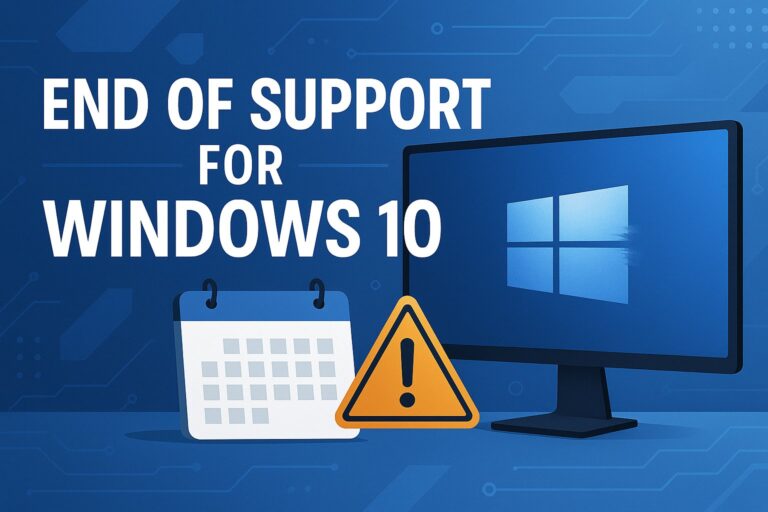10 Ways To Reduce Your Cyber Risk
Digital technologies, devices, and media have become integral to conducting business daily. The increased risk of compromised sensitive data comes with advancing technology’s opportunities and benefits.
Your organization’s cyber risk is the threat of financial loss, disruption of service, or damage to your organization’s reputation caused by a failure of your information technology systems and its security. While many organizations believe they are safe from a cyber threat due to their size or industry, cyber security is more critical today than ever for organizations of all sizes and industries.
Cyber attacks in 2021 increased at an alarming rate over previous years, and the number of reported attacks in the first half of 2022 set a new record. As cyber-attack threats grow, cyber security experts encourage organizations of all sizes to take precautions to reduce their cyber risk. Our cyber security experts at Alliance Technology Partners have identified ten ways to reduce cyber risk and effectively safeguard your business.

1) Conduct a Comprehensive Cyber Risk Assessment
A critical component of protecting your organization’s system and data is identifying potential weaknesses in your system. Your organization should conduct a comprehensive cyber risk assessment annually to help you identify your cyber risk and what you need to address. Following up with the information you gain is vital to developing a detailed action plan.
2) Conduct Ongoing Cyber Awareness Training
Human error is one of the most common ways cybercriminals gain access to an organization’s data. For example, cybercriminals will send fraudulent emails impersonating someone from your organization and ask for personal details or access to specific files. Unfortunately, the links used by the criminals often seem legitimate, and it’s easy to fall into the trap, making employee awareness vital. One of the most effective ways of protecting against cyber-attacks and data breaches is to train your employees on cyber attack prevention and inform them of current cyber threats. Teaching users about the threat will create a cyber security culture in your organization and significantly reduce your risk.
3) Use Multi-Factor Authentication
Multi-factor authentication is a security technology that requires two or more independent credentials to verify a user’s identity for a login or other transaction. Your organization should use multi-factor authentication wherever it is available. Multi-factor authentication is the simplest yet most effective action an organization can take to protect itself.
4) Enforce a Strong Password Policy
Having the same password setup for everything dramatically increases your organization’s cyber risk. If hackers figure out your password, they now have access to everything in your system and any application you use. Password policies are easy to implement and extremely effective. Make sure to require a minimum of 12 characters in a password and make certain users use a password manager. Having different passwords set up for every application you use, and changing them frequently, will also help create a high level of protection against external and internal threats.
5) Implement a Least Privilege Access Model
One of the cyber risks that organizations face is physical, and controlling who can access your network is essential. In addition to having a perimeter security system that stops someone from walking into your office and plugging a USB key containing infected files into one of your computers, it’s essential to control team members’ level of access. Granting sweeping access to companies or departments only leaves room for human error. Instead, people should only have the access needed to do their job.
6) Make Sure All Systems Are Routinely Patched
Cyber-attacks often occur because an organization’s systems or software isn’t fully up to date, leaving weaknesses. Cybercriminals can exploit these weaknesses and gain access to your network, and once they are in, it’s too late to take preventative action. Staying on top of patching can be tedious, but it’s essential for cyber security. To counteract this, it’s often beneficial to have a managed service provider do this for your organization so you can focus on growing your business.
7) Deploy Next-Generation Endpoint Security Solutions
Old-fashioned anti-virus software no longer provides enough security. Mobile devices, tablets, and laptops connected to corporate networks give access to security threats. These paths need protection with specific endpoint protection software. You should deploy next-generation endpoint security protection to every possible device on your network. Next-generation endpoint security can detect threats based on their behavior, not just a signature, and are tied back to a managed threat team that can respond to a threat within minutes.
8) Encrypt All Data
In most cases, it’s best to err on the side of caution and use encryption to protect your data, yourself, and your organization. Your data should be encrypted at rest and when in transit. Imagine you store your data in a theft-proof vault and using an armored vehicle when it is in transit. Keep all of your organization’s data encrypted no matter where it resides.
9) Perform Ongoing Penetration Testing
A penetration test is a simulated cyberattack against your computer system that checks for exploitable vulnerabilities. Performing ongoing, comprehensive internal and external penetration tests can uncover various vulnerabilities required by most compliance standards and frameworks. At Alliance Technology Partners, we recommend that organizations scan weekly or monthly.
10) Mandate Secure Remote Access Solutions
Mandating secure remote access or VPN connections throughout your organization is vital. Your internet traffic is encrypted when you use a VPN so that no one can intercept it via public wi-fi. With remote work here to stay, this is more important than ever. Public wi-fi and home networks are not as secure, but ensuring secure remote access can reduce this risk.
Reduce Your Cyber Risk With Alliance Technology Partners
Reducing your organization’s cyber risk involves more than just your IT team and demands the involvement of your entire team. Risk management requires a thorough understanding of the constantly evolving risks and the practical tools and techniques available to address them.
From ransomware to phishing, today, there are simply far too many threats to ignore the risks. Preventing cyber attacks is the key to reducing your organization’s cyber risk. At Alliance Technology Partners, we are experts in cyber security. Our skilled professionals can help you identify weaknesses and provide the tools you need to reduce your organization’s cyber risk. Contact us today to learn how we can help keep your system protected.


